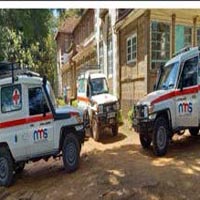Pre-hospital emergency care system: Utilization of ambulance services in Nairobi county

Submitted: 13 October 2021
Accepted: 22 November 2021
Published: 20 December 2021
Accepted: 22 November 2021
Abstract Views: 2236
PDF: 681
Publisher's note
All claims expressed in this article are solely those of the authors and do not necessarily represent those of their affiliated organizations, or those of the publisher, the editors and the reviewers. Any product that may be evaluated in this article or claim that may be made by its manufacturer is not guaranteed or endorsed by the publisher.
All claims expressed in this article are solely those of the authors and do not necessarily represent those of their affiliated organizations, or those of the publisher, the editors and the reviewers. Any product that may be evaluated in this article or claim that may be made by its manufacturer is not guaranteed or endorsed by the publisher.

 https://doi.org/10.4081/ecj.2021.10217
https://doi.org/10.4081/ecj.2021.10217








